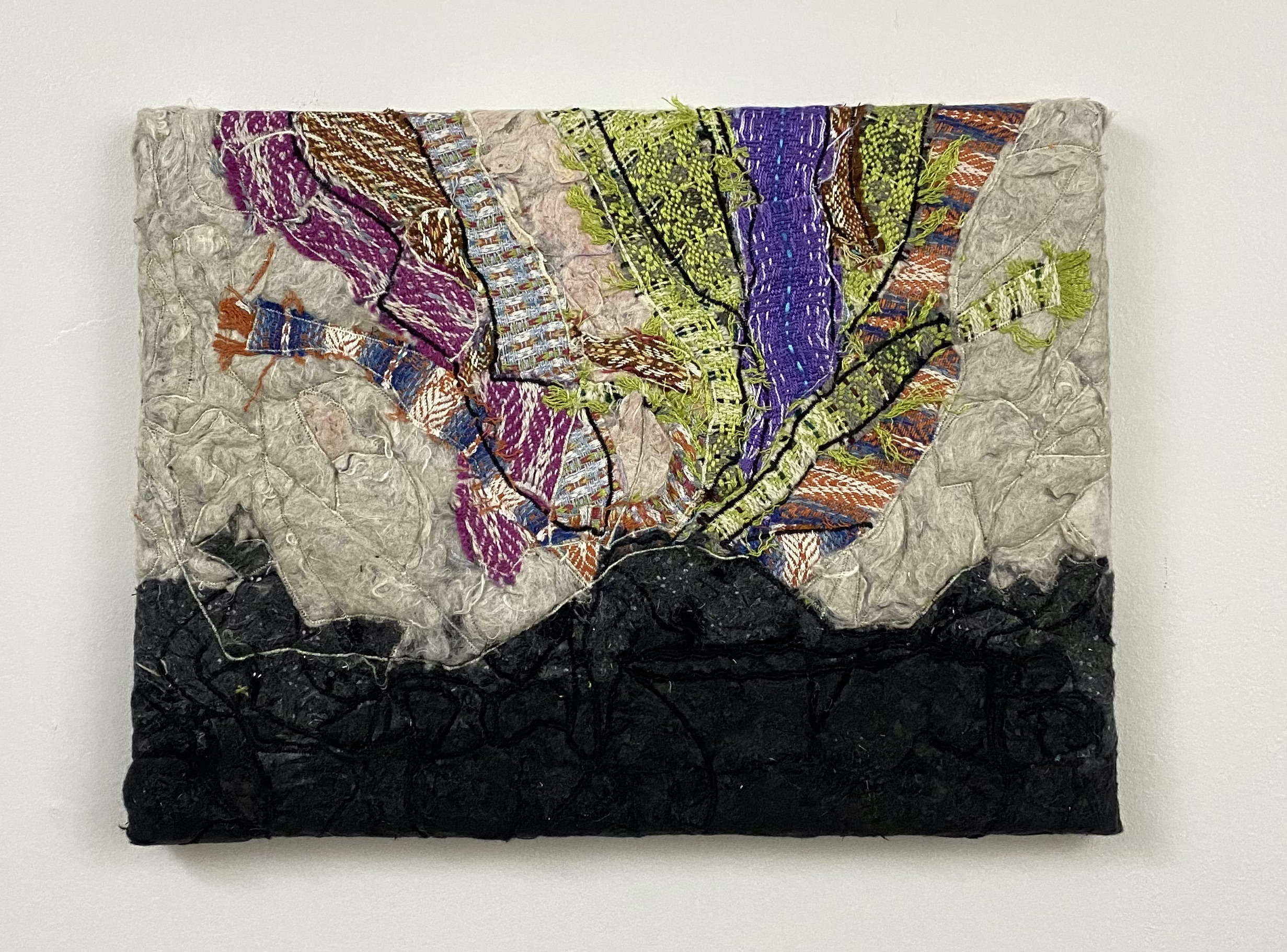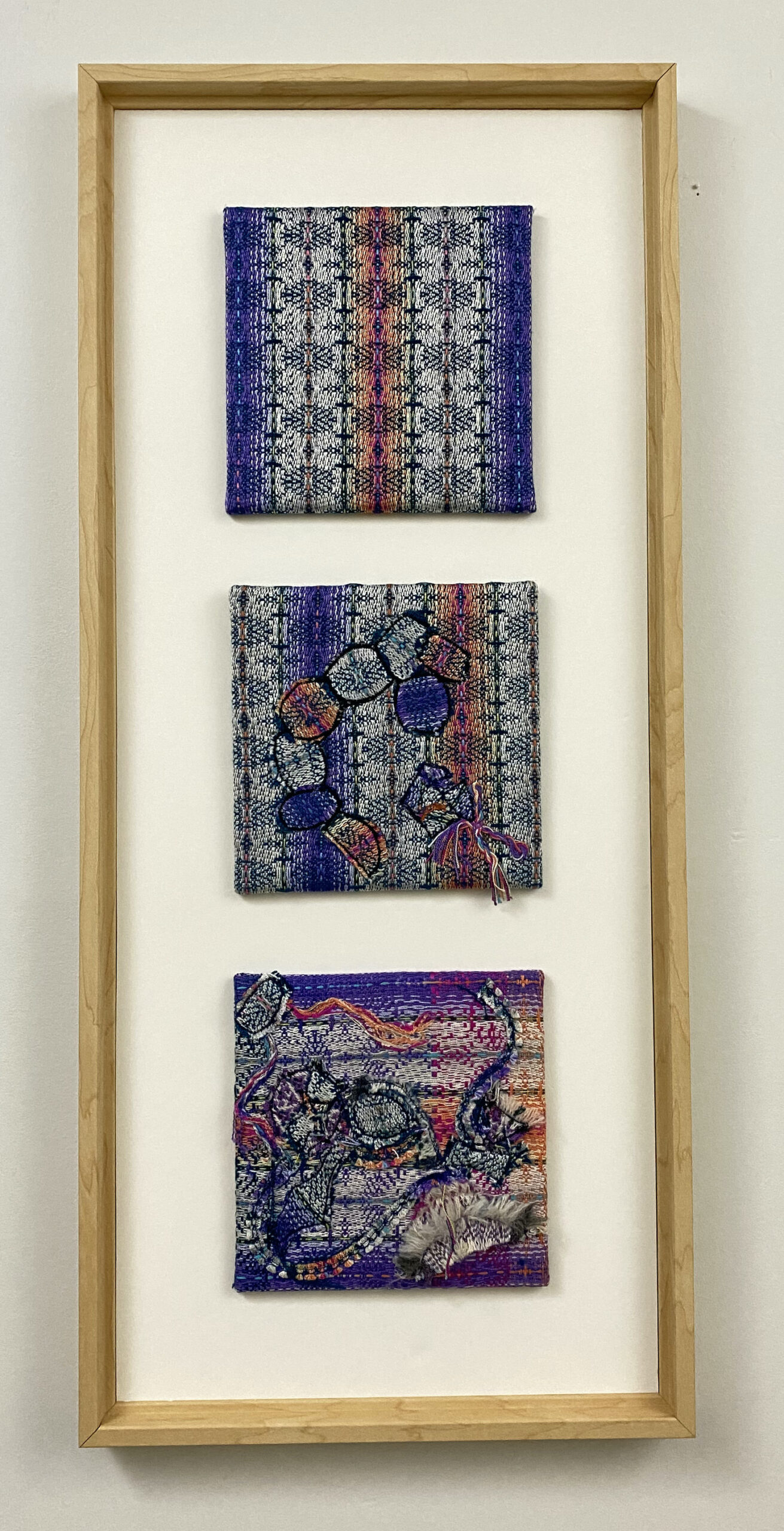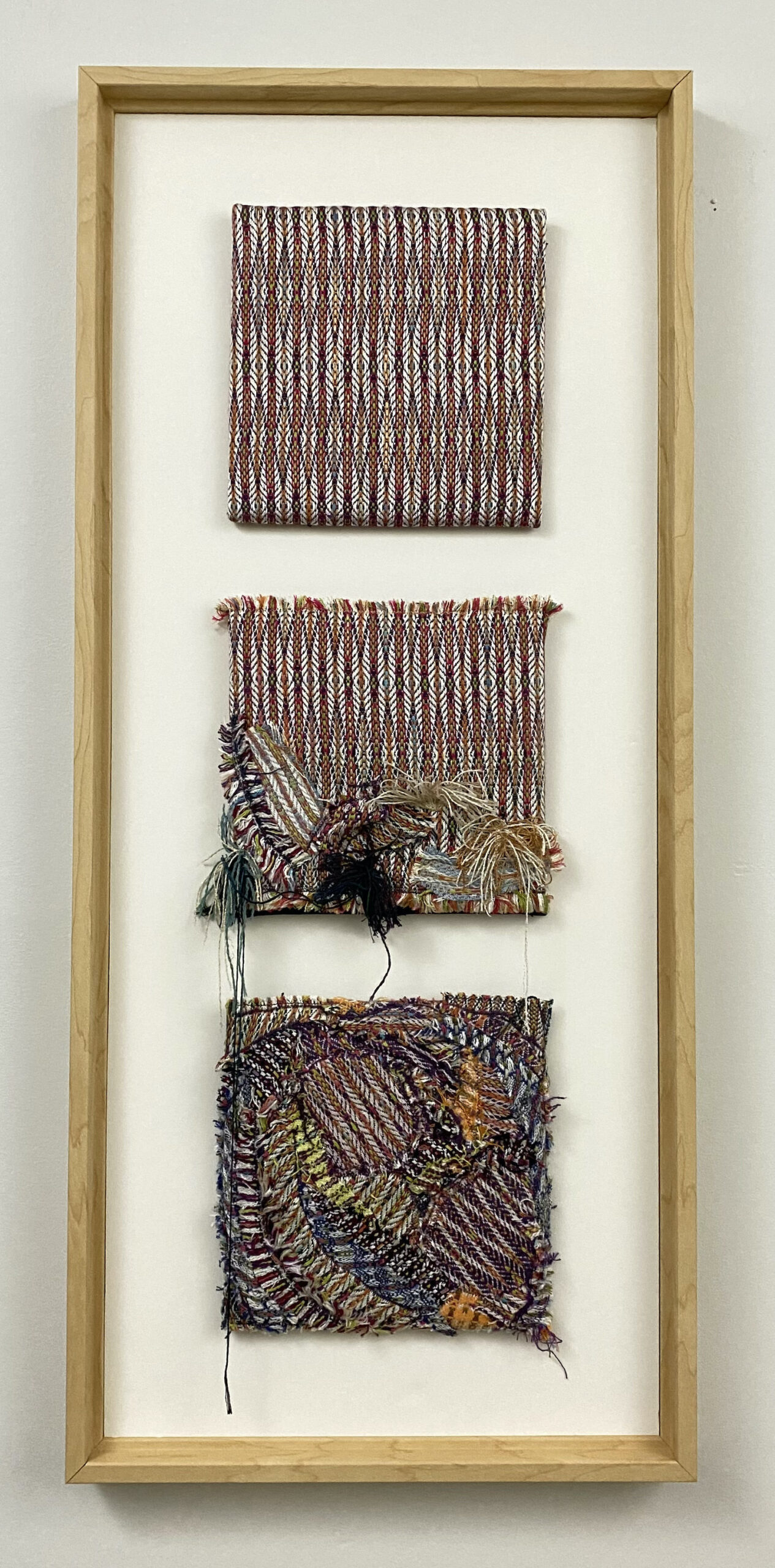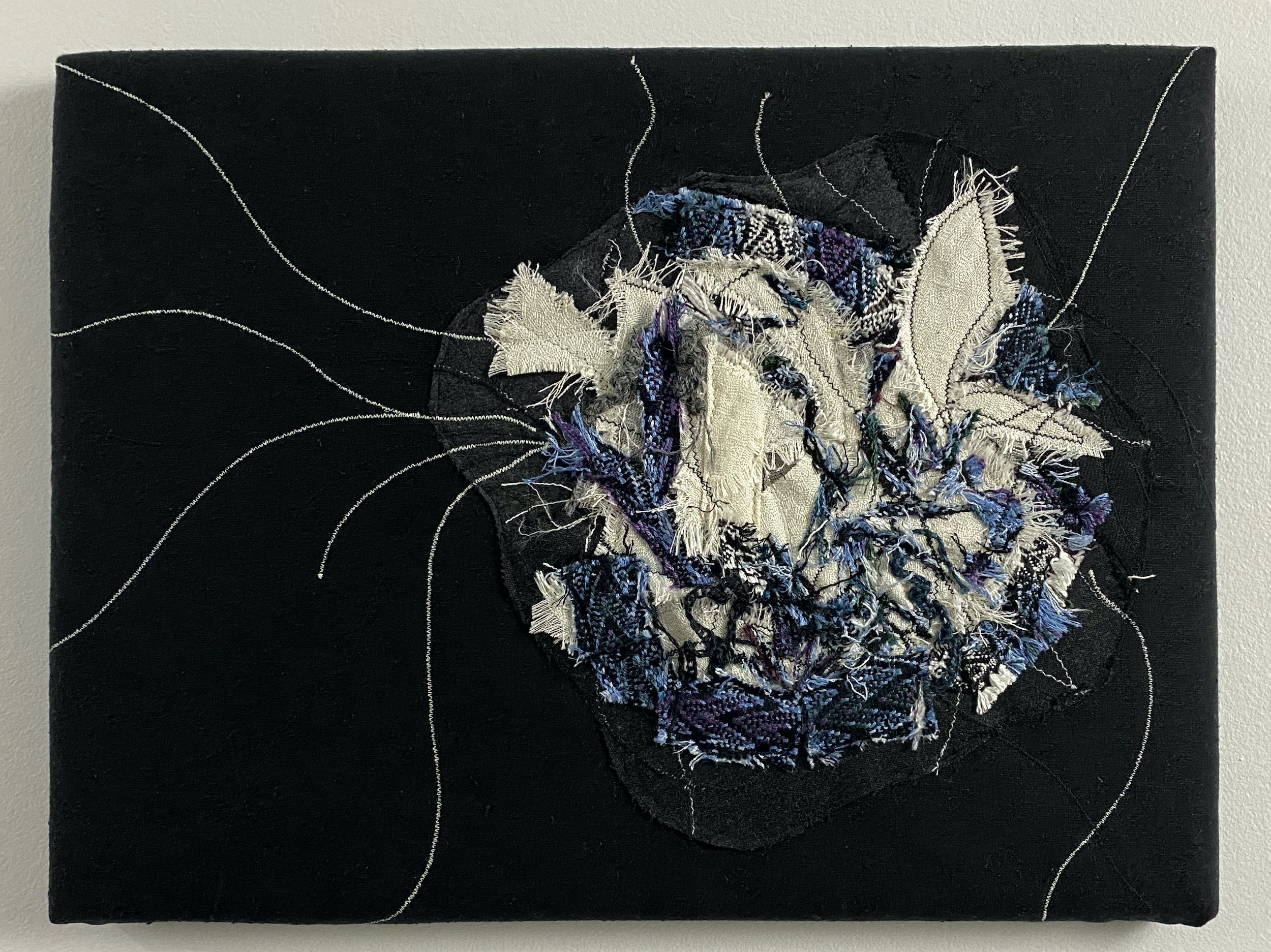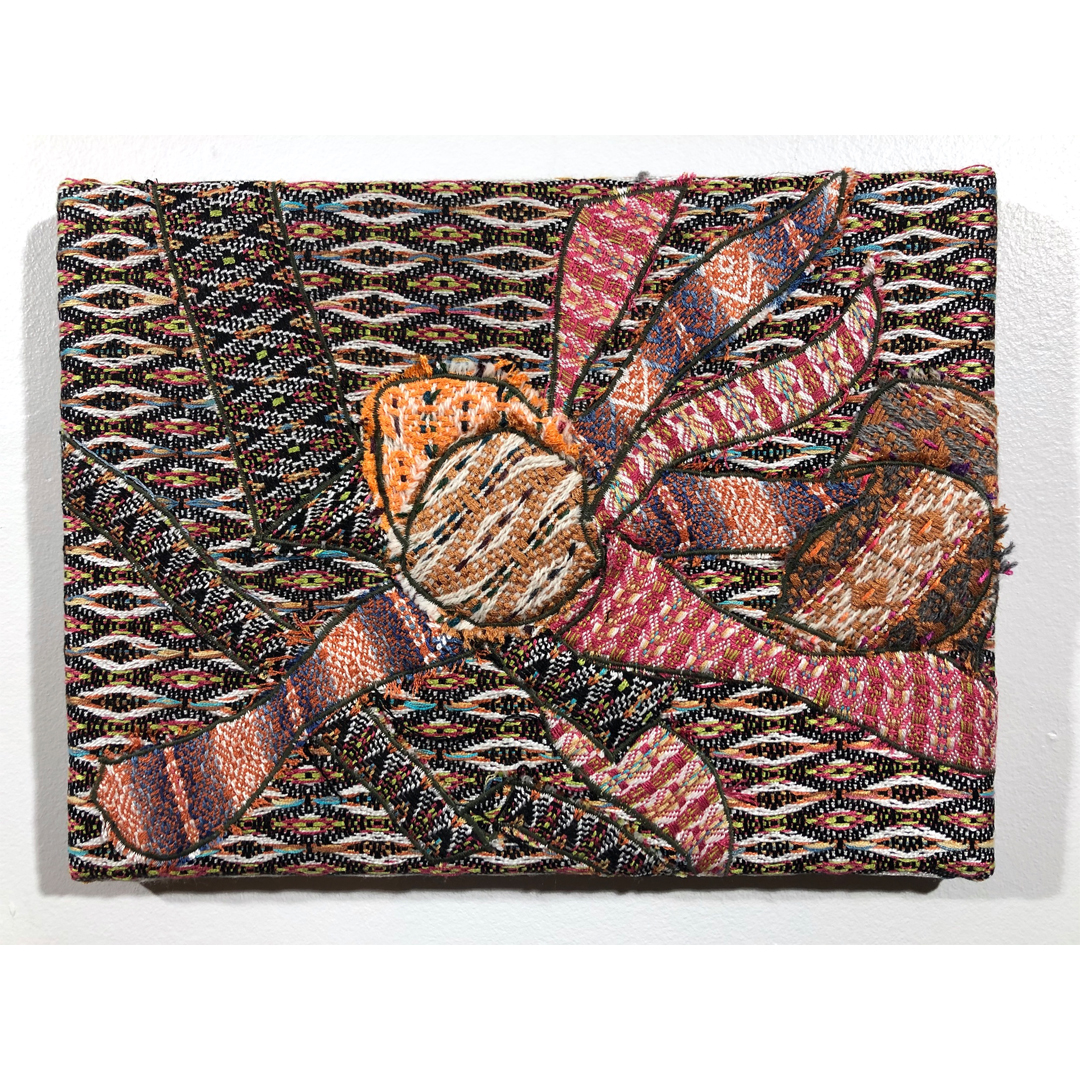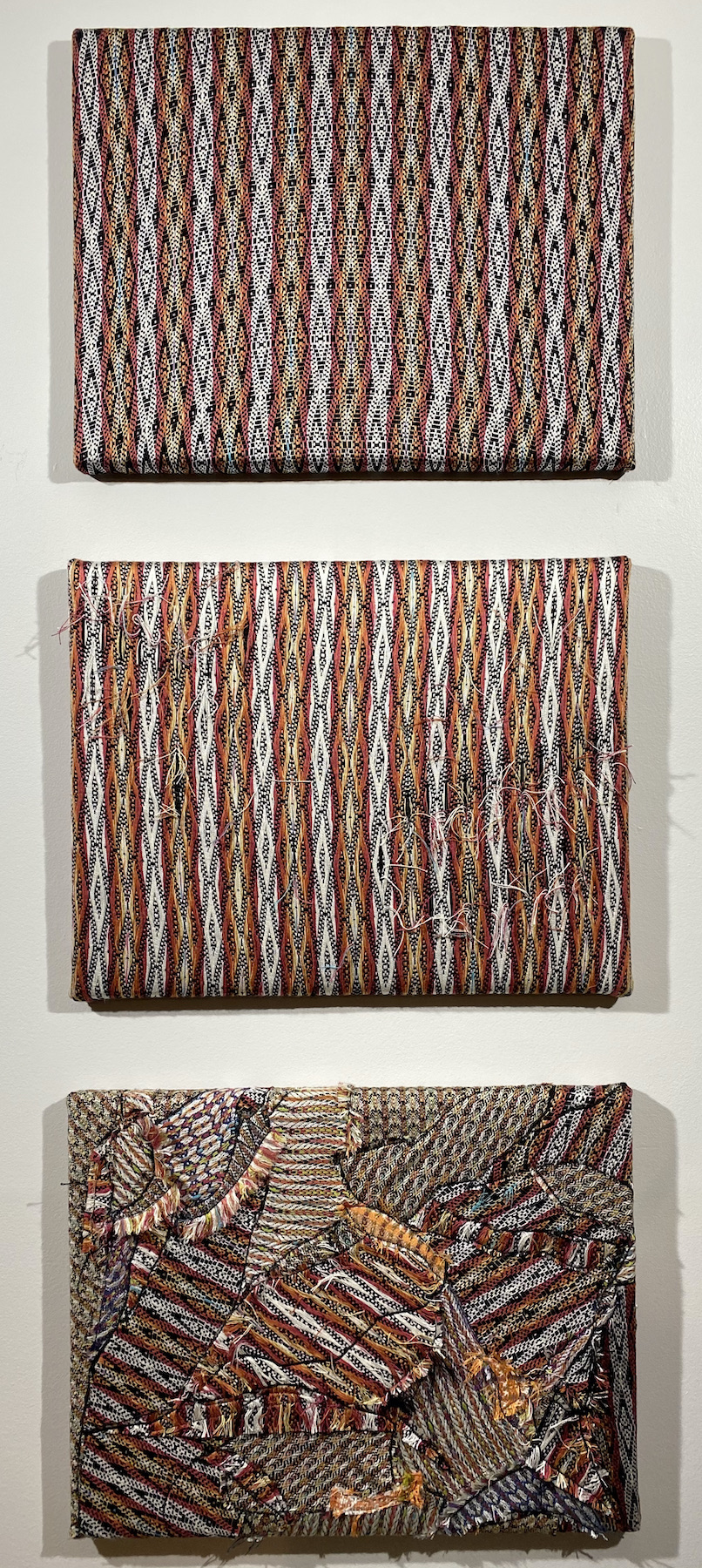Constance Collins
Coral Conundrum: Dead or Alive, 2023
Upcycled yarns, handmade paper, raw silk background 24" w x 18" h
Coral Conundrum: Dead or Alive recalls coral reefs & their inhabitants. We must protect these ecosystems from climate change or lose them. As reefs deteriorate, they lose their vibrant color & ability to provide nutrients & shelter. The gradation from color to monochrome represents the bleaching that occurs as coral dies.
Constance Collins
Mother Earth: Now You Sea It, 2022
Upcycled handwoven fabrics, handmade paper and sea anemones from waste yarns, hand-dyed disinfectant wipes, metallic threads 10" Square
Now You Sea It upcycled textile art recalls coral reefs and their inhabitants under an evening sky. We must protect these crucial ecosystems from climate change and pollution threats or we will lose them.
Constance Collins
Mother Earth: Landfill, 2022
Upcycled handwoven fabrics, handmade paper, commercial fabrics 24" w x 18" h
The inspiration for this piece was a photo of a landfill overflowing with clothes, plastic bottles & other ephemeral items. I captured the chaotic nature of its debris with my own waste materials; remnant yarns, handmade paper and handwoven swatch fabrics. The open sky with shimmering wisps offers hope for our environment.
Constance Collins
Black Tide: Not Optional, 2021
Upcycled handwoven silk, alpaca and bamboo fabric; handmade paper 16"w x 12'h
Black Tide: Not Optional is my message about the destruction of waterways through the wasteful practices of uber-consumerism & fast fashion combined with reckless unregulated manufacturing. There was a joke in Asia that you could tell the seasonal 'it' color from the color of some rivers. Unregulated textile factories spilled their dyes into the nearby rivers, artificially coloring them each year. But now some are solid black from the accumulated chemical and dye runoff. These fashion factories destroy waterways throughout the world and leave individuals without clean drinking water while causing physical ailments. Now "70% of the rivers & lakes in China are contaminated by the 2.5 billion gallons of wastewater produced by the textile industry"1. And that is just one place. In this piece, my handwoven fabrics represent the last 6 years of the Pantone ‘It’ colors, becoming metaphorical rivers that intertwine into a black mass representing the environmental damage that the textile and fashion industries produced to meet the demands of fashion consumers.
Constance Collins
Mother Earth: Spiraling out of Control, 2020
Upcycled handwoven silk, alpaca and bamboo fabric 14"w x 34"h
Mother Earth: Spiraling Out of Control migrates from a pristine origin through a world spinning out of control due to geopolitical discord and environmental neglect, leading to a final outcome that buries us in our own short-sightedness if we don’t act more responsibly.
Constance Collins
Mother Earth: Hanging by a Thread, 2020
Upcycled handwoven silk, alpaca and bamboo fabric 14"w x 34"h
Mother Earth: Hanging by a Thread illustrates the unraveling of our world from abuse, intolerance, disinformation and social injustice into chaos. If we remain in this condition and do not reduce the polarization, our entire planet will unravel at numerous levels.
Constance Collins
Fireworks, 2021
Upcycled handwoven silk, alpaca and bamboo fabric 16" w x 12" h
Inspired by colorful flashes from fireworks displays, this collage incorporates several layers of handwoven fabric stitched together to emulate the sparkle from a firework. Light wispy trails are stitched into the night sky background to further enhance the visual impact. As often happens with abstract pieces, there are other interpretations as well. An island, a deep-sea creature and an unraveling nebula are just some that have been suggested by viewers.
Constance Collins
Viral over Virile, 2020
Upcycled handwoven alpaca, bamboo & silk fabrics 12" (w) x 9" (h)
Viral over Virile presents myriad layers of patterns and fabric mutations that offer numerous interpretations as the viewer lingers. It suggests that COVID showed us how easily viral beats virile. COVID also redefined aggression from the brute force masculine approach into the mutable sophistication of viral variants. Initially, healthy individuals succumbed to the lethal strains as we tried to counteract its global spread. Primitive suggestions as well as proven practical solutions tried to mitigate particle spread and conquer it. But even after vaccines were created, the virus continues to mutate to survive. It proves that while our aggressive countermeasures reduced the impact, they could not eradicate it.
Constance Collins
Pandemic Isolation Blues, 2020
Upcycled handwoven alpaca, bamboo & silk fabrics 16" (w) x 12" (h)
Pandemic Isolation Blues provides an abundance of disjointed patterns and textures that befits those times when our routine was shredded & shrouded in angst. There is no dominant element so the viewer is confronted with many stimuli of equal weight. To completely absorb it requires some time & then the imagination kicks in. Are those leaves floating down a stream? What about that one spot of bright green– is there something underneath the layers or does it represent hope for a greener tomorrow in our ocean? I want to engage a viewer’s imagination in the same way that cloud formations used to stimulate mine when I was a child.
Constance Collins
Mother Earth: Descending into Chaos, 2020
Upcycled handwoven silk & bamboo fabrics 22" (w) x 50" (h)
Mother Earth: Descending into Chaos starts with a clean panel and then devolves into one that is flipped on its head, frayed and scarred. It continues to a final destination that is cluttered, chaotic and clashing. This is how I view our future environment both socially and environmentally, if we don’t begin to reduce our polarization and work more harmoniously to a better result. Inspiration: Clothes are an everyday necessity, but the industry’s current take-make-dispose model is the root cause of many environmental impacts. For example, every second, the equivalent of one garbage truck of textiles is landfilled or burned.1 Between 2000 and 2014, clothing production doubled with the average consumer buying 60 percent more pieces of garment compared to 15 years ago. Yet, each clothing item is now kept half as long.2 1: 2017, Ellen MacArthur Foundation report 2: 2018, UNECE Sustainable Development Goals



